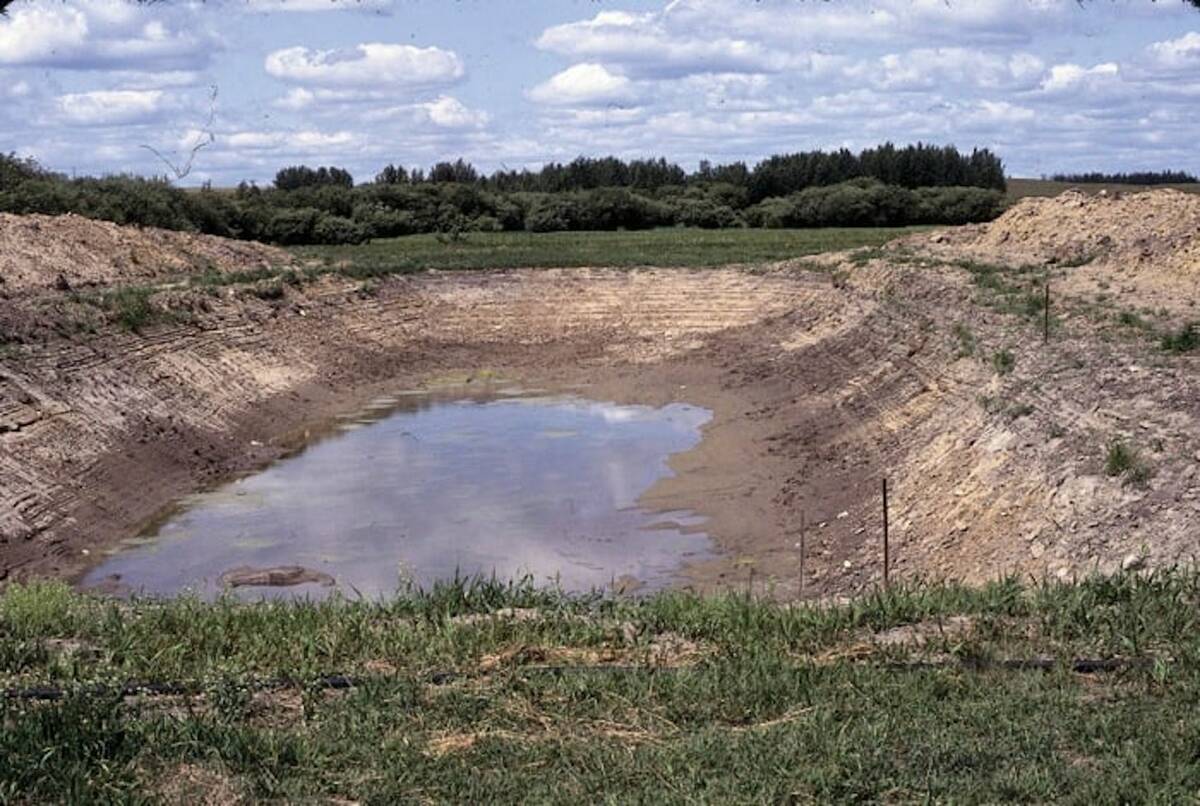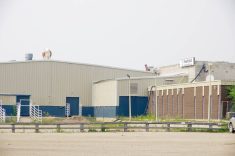As the demand for better beef grows, Galloway breeders want to make sure they aren’t left behind.
The hardy Scottish cattle are among the original British breeds imported to Canada. Like other British cattle they were developed for beef production only and have a reputation for producing well-marbled meat.
Although their numbers are small, Galloway enthusiasts hope shows like the Calgary Stampede can raise the breed’s profile among cattle producers.
Originally from southwestern Scotland, Galloways have long, soft coats with a wavy undercoat that may be black, red, yellowish brown or white. Another strain carries a white belt around its middle. Galloways are known as hardy, placid animals that can handle adverse climates.
Read Also

Dry summer conditions can lead to poor water quality for livestock
Drought conditions in the Prairies has led to an decrease in water quality, and producers are being advised to closely monitor water quality for their animals.
To promote the breed, Canada hosted 120 Galloway breeders from seven countries during an international congress at the Stampede last month.
One of the goals is to establish a world council for the breed, said Robert Ballantyne, of Livelong, Sask. He is the outgoing president of the Canadian Galloway Association.
Quality product
Ballantyne wants to show the beef trade that Galloways produce quality cattle that finish at 1,100 pounds and consistently grade AA or AAA.
He sees genetics lines getting better all the time. This has improved markets for bulls for commercial producers who like the feed efficiency and easy fleshing ability of a Galloway.
Ballantyne raises 40 purebred Galloways and has 200 commercial cows. He selects medium-framed cows and uses a Maine Anjou bull for a terminal cross.
“We can’t compete with the (European) breeds. We are a maternal breed,” said Ballantyne.
Within his large herd, Ballantyne is always working to broaden and improve his genetic pool.
Always searching
“The day I buy a herd bull, I start looking for a new one the next day.”
Lisa Wyman, vice-president of the American Galloway Breeders Association, represents 650 breeders in the United States. She hand-picked her Galloways from all over the United States and Canada six years ago.
With her herd of 30 white Galloways and 30 belted Galloways, she said the show ring is their best form of advertising.
She owns the only red-belted Galloways in the world and has found she can’t sell black Galloways in her home state of Connecticut. People in New England regard these cattle as novelties and she is dismayed to see them living on small hobby farms when Galloways have far more useful purposes.
Wyman also has 100 polled Herefords.
“When the polled Herefords are huddled in the shed, the Galloways are out with their nose under the snow foraging,” she said.
Besides their hardiness, she likes their calving ease.
Wyman runs 55 recipients in an aggressive Galloway embryo transfer program. The calves are born on her Four Winds Farms so she can personally select the best ones for market.
Her Galloway experience is similar to the other 120 people attending the congress.
Robert Fleming raises Galloways in southeastern Scotland. Even in their homeland Galloway numbers are small. They compete for attention against Charolais and Simmentals, he said.
In his first visit to Canada he was impressed by the show quality but was surprised to see the close clipping of hair coats for the show ring. His part of the world is cold and wet so the cattle need their coats.
In the business for six years, he sells his cattle for breeding stock and beef.
However, beef sales are slow because of food scares caused by the possible linkage of bovine spongiform encephalopathy to a terminal brain disease in humans.
“It’s been a hard go,” he said.

















